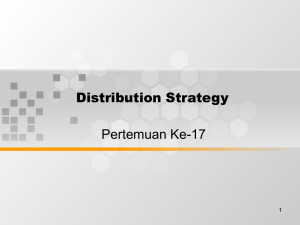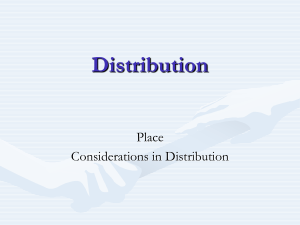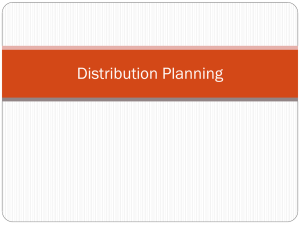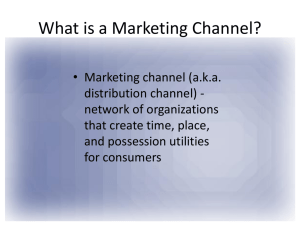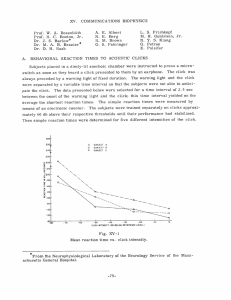Channel Management: Distribution Planning Strategies
advertisement
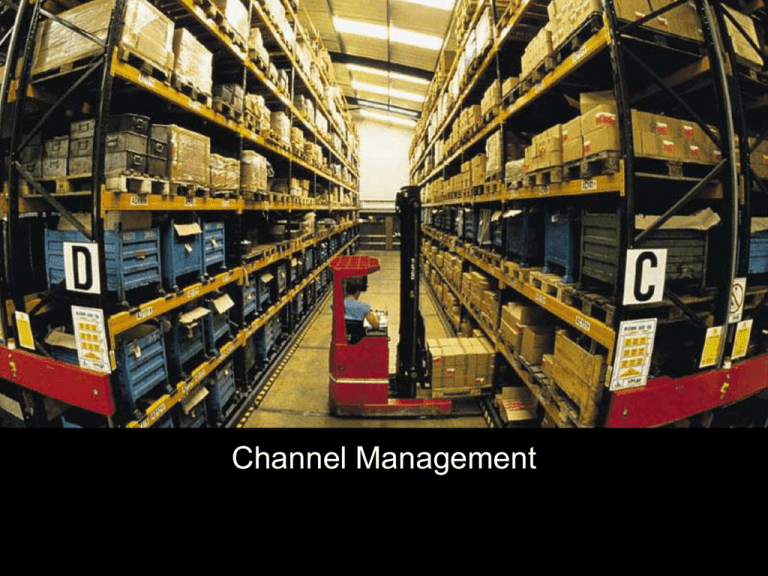
Channel Management Sec. 21.2 – Distribution Planning • The key considerations in distribution planning • When to use multiple channels of distribution • How to compare the costs and control involved in having a direct sales force versus using independent sales agents • The three levels of distribution intensity • The effect of the Internet on distribution planning Understanding Distribution Planning • Key Considerations in Distribution Planning • Involves decisions about a product’s physical movement and transfer of ownership from producer to consumer • The decisions affect a firm’s marketing program. • Some of the major considerations follow: Understanding Distribution Planning • Multiple Distribution – used when a product fits the needs of both industrial and customer markets. “We're #1 in every foodservice segment: K-12 Schools, College/University, Healthcare, Business Dining, Lodging, and Restaurants!“ You can also buy this brand in your local grocery store. Understanding Distribution Planning • Control vs. Costs – Producers must weigh the control they want to keep – Who does the selling? • A direct sales force is costly. • With an agent, a manufacturer loses some of its control over how sales are made Understanding Distribution Planning – Who dictates the terms? Giant retailers (WalMart, Home Depot) require special services like shipping, pricing, packaging, and merchandising. Click on the Wal-Mart image above to learn more about their RFID requirements. Click on the RFID image to learn about what it is. Distribution Intensity • Exclusive Distribution – involves protected territories in a given geographic area. • Prestige, image, channel control, and a high profit margin for both the manufacturer and intermediaries. Click the receiver to see the number of dealers in your area. Distribution Intensity • Selective Distribution – means that a limited number of outlets in a given geographic area are used to sell the product. • The intermediaries chosen are selected for their ability to cater to the final users that the manufacturer wants to attract. Distribution Intensity • Intensive Distribution – involves the use of all suitable outlets to sell a product. • The goal is complete market coverage Distribution Intensity • E-Commerce – products are sold to customers and industrial users through the use of the Internet. • B2B operations provide one-stop shopping and substantial savings for industrial buyers.
